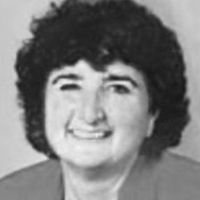Question
What is proning and how does it impact swallowing?
Answer
Proning is a treatment strategy used with patients with respiratory compromise that may contribute to dysphagia. You may have patients at your hospital who have benefited from this technique and it is not unique to COVID-19. It's been used for years with patients with respiratory compromise but seems to be really effective for patients with COVID-19. So, we're seeing it being used much more routinely than we ever did before.
Proning is just what it sounds like. Patients spend a lot of time in the prone position (i.e. on their stomachs). The head is turned to one side or the other and one arm is over the head in what is called a swimmer's position. While they might maintain that prone position for 12-18 hours, their head position is changed routinely, about 1-2 hours depending on the protocol, and they alternate arms over their head as well.
In our hospital, this is utilized fairly routinely with COVID-19 patients who are ventilated, but, last summer, it was being used fairly successfully with COVID-19 patients who were not ventilated. I think that's probably true in other facilities, they have probably had the same kinds of results.
Why does this help? It seems to take some of the pressure off the lungs. It takes the weight of the body and the weight of the abdominal organs off the lungs. It requires less pressure to keep those alveolar spaces open and available for gas exchange and seems to help with the drainage of fluid.
However, it does create some problems. It makes oral hygiene very difficult. It increases the likelihood of airway injury because patients now have to be turned and they're changing neck position fairly routinely. If you think about that with an intubated patient, there's more potential for airway injury. There's also potential for airway injury when patients are moved from supine to prone. It's done very carefully by a team all working together to keep all the tubes, drains, etc. in place. But in that movement, in that shift, there's always the potential for more airway injury.
We have seen patients with breakdown in facial tissue from being in the prone position. Some patients have had significant upper extremity weakness from having their arms over their heads. We have seen pressure injuries on their knees, breasts, orbital pressure issues, and in some cases vision loss. I have not seen a lot of that in our facility, but I've read that it is sometimes a problem with proning. However, we have seen a lot of oropharyngeal edema due to hyperextension of the neck.
While proning has been demonstrated to decrease mortality in COVID-19 patients, we do see more pressure sores and more difficulties with ET tubes. If you think about the potential for edema and the potential for airway injury, once these patients are extubated, the likelihood of post-extubation dysphagia is going to increase.
Refer to the SpeechPathology.com course, COVID-19 and Dysphagia: What We Need to Know, for more information on causal mechanisms of swallow dysfunction in patients with COVID-19.

